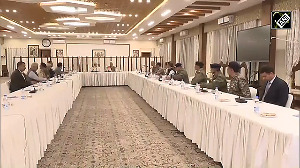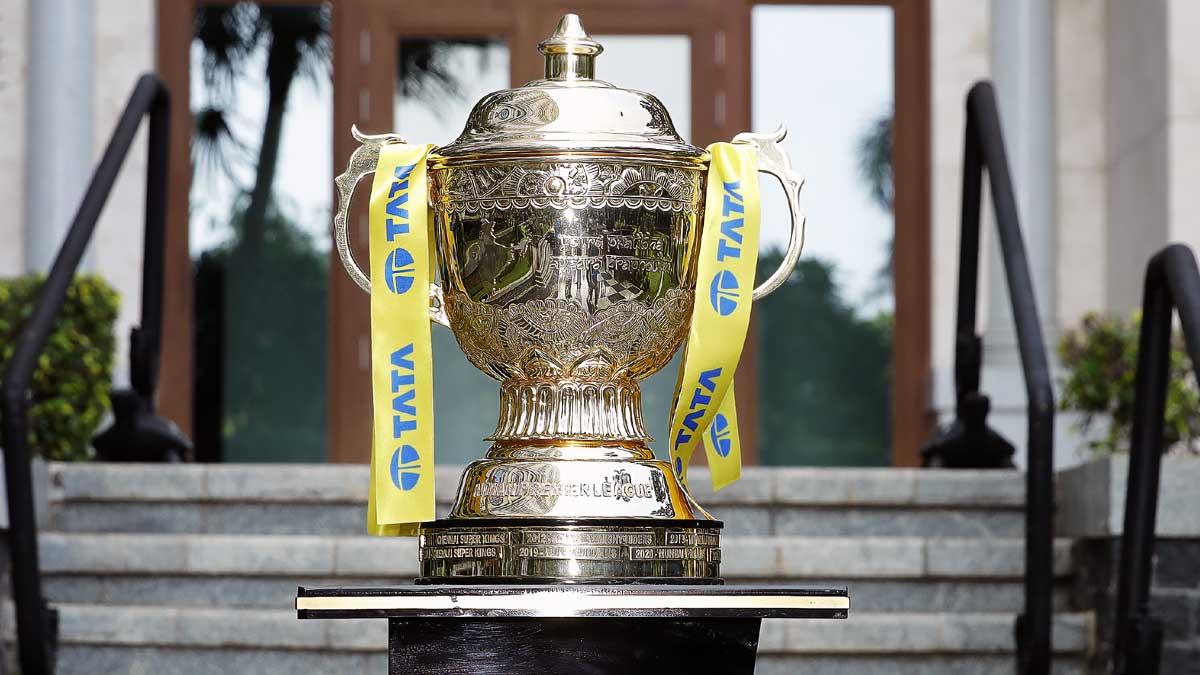If Anil Kumble gets injured ever again, he will be paid for up to 18 months the amount he would have earned if fit, and not zilch as was the case when he was out of international cricket following a shoulder injury in 2000-01.
Indian cricketers on the field will now be unafraid of getting injured and ready to take greater risks, particularly when fielding.
A cricketer once told rediff.com: "Every time I dive to field a ball or take a catch, there is fear in my mind that if I injure myself I will be out of the reckoning; I will be out of the team; I will lose out on my legitimate earnings. Also, there is the fear that even after I recover I might not be considered for selection. So today, if I am injured, I will tend to hide the extent of my injury, rather than risk getting dropped."
Hopefully, this will not be the case with Indian cricket anymore. The Board of Control for Cricket in India is poised to take a step towards greater professionalism by putting in place a central contract system for the national team. After three-and-a-half years, the deal is at last ready to be inked by the players and the BCCI.
"The pact will be signed before the Indian team leaves for the Asia Cup, which starts on July 16 in Sri Lanka," BCCI joint secretary Ratnakar Shetty said. "The gradation and selection of players will be done soon, maybe next week."
It all began during India's 43 day tour of Sri Lanka in 1997 when Shetty accompanied the team as manager. Like the tour of Pakistan earlier this year, that tour had strictly restricted movements for the team owing to the threat from the Liberation Tigers of Tamil Eelam.
"We had a lot of time to exchange views," said Shetty, "and that is where we studied the system of payment that exists in other countries. The idea to have a graded payments system for the players shot up there." Since then Shetty has been working closely with Indian cricketers to put the system in place.
In September 2000, the BCCI, at its annual general meeting, discussed the matter. Shetty, then a member of the BCCI's finance committee, put forward a proposal according to which a player who played between one and 20 Tests would get a particular amount that would increase exponentially with each slab of 20 Tests.
"It was Dr A C Muthiah, the then BCCI president, who initiated in 2001 the Players' Contract System," said Shetty. "I met the players not for the contract system but for a graded payment system. For their part, the players insisted that the BCCI put in place a contract system modelled along the likes of successful ones in Australia and South Africa where there is a retainership and match fees. Finally, last week we sorted out things where the document was finalized. I am sure the board president is keen to settle the issue before the team goes for the Asia Cup."
The pinch of not having contracts and a graded payment system was felt by the Indian players after the 2003 World Cup. The 15 member squad, including players like Ajit Agarkar, Parthiv Patel, and Sanjay Bangar, who ended up as tourists, earned a whopping Rs 75 lakh. Those who fought hard on the field to help India reach the final also got the same amount.
This discrepancy called for fair play and the need for a contract system with graded payments for senior cricketers. One thing was immediately acceptable to the players and the Board: the playing eleven should get more money.
But implementation of a central contracts system has been delayed for a long time now owing to the various clauses that needed to be drafted carefully. "One of this was dealing with endorsements of the players keeping in mind the controversy with regard to the 'playing nations contracts' signed by the BCCI with the International Cricket Council last year," said Shetty.
Under the playing nations contract, the players had to adhere to certain conditions. Internationally, it is the Indian players who have maximum endorsements. When the contracts were introduced the players were unaware of the technicalities. One condition was that their advertisements were not to be shown during, before, and after an ICC tournament. This meant that for almost three months of a year companies could not air advertisements featuring Indians playing in these tournaments.
For the Champions Trophy, the ICC was forced to relax the rule and agree that ads featuring Indian players would not be aired only during the tournament.
"The central contracts system was delayed because it took some time to sort out the issue with the ICC," Shetty explained. "We had to ensure that this problem does not come up again. Also, the players wanted to protect themselves. They did not want to land up in trouble again. It took time from our side as well because we had to take into consideration all the legal clauses that the board has to include. So, both parties are responsible for the delay."
Shetty added: "The agreement/legal draft was ready before the team left for Australia. After coming back from Australia there was a little time between [the] Australia and Pakistan [tours], so we could not do much. Finally, at the recently concluded fitness camp in Bangalore we met everybody and the draft agreement was finalized."
Shetty has been working closely with the players, especially Kumble, to put everything on paper. His efforts are now a few steps away from bearing fruit.
Features of the central contracts system:
- An annual contract for the national team.
- A pool with a maximum of 20 players to sign the contracts.
- Minimum eligibility for the contract: 3 Tests and 10 ODIs (player should have played in the game, and not just been a member of the squad).
- Match fee + retainership per annum.
- The more matches you play, the more you earn. The better you perform, the better your grade.
Incentive Scheme: For India's win against a team higher up in the ICC rankings, players' match fees will be doubled. But if they lose a match, half their fees will be deducted.
The annual central contracts system consists of two components:
Retainership A, B and C grades.
Match fee Test: Rs 2 lakh; ODI: Rs 1.6 lakh
Reserves to get paid 50% of what the playing 11 get.
Retainership to have three grades A, B, C and not four as discussed before. The amounts set for the grades: A Rs 60 lakh per annum; B Rs 30 lakh; C Rs 15 lakh.
A special committee comprising the BCCI president, secretary, selection committee chairman, and team coach will decide upon the players in the retainership grades.
The 'value of the players to the team' will be evaluated by looking at his contribution in the previous season.
The selection committee will select the 20 players eligible for signing contracts on the basis of their previous season's performance and fitness levels.
Match Fees: Once players are graded, not all of them will play all the matches. There will be a select 14 or 15 from the pool of 20 who are fit and playing. These 15 will be entitled to the second component, the match fee.
Only those in the playing squad will be entitled to the match fees. While those actually playing will get the full amount, the reserves will get 50 per cent.
Clauses for payments during injury:
If a player in grade B breaks down in the course of a series, even if he misses the remaining matches his retainership will be paid to him.
If a player is seriously injured, his retainership will be paid for the entire year. In some cases, if the board feels that the player's case merits it, it may extend the payment up to 18 months.
Players' endorsement clause:
Care should be taken that player endorsements, whether singly or in groups, do not create problems for the board's official sponsors.
The agreement also stipulates that:
- the contracted players can only participate in matches sanctioned/approved by the BCCI.
- players not in the first 15 will have to keep themselves fit all the time and pass fitness tests every three months.
- players need to meet all their obligations to the board, and failure to do so can result in penalties. For example, if a player is assigned to talk to the media, he should do so.
- players are not employed by the board; they are merely on annual contract. So they do not have to quit their regular jobs.
With this system falling into place, performance will become the king. Each and every member of the team will have to fight for his place and convince the selectors that he is one of the 20 best cricketers in the country.
The players most likely to get contracts now: Sourav Ganguly, Virender Sehwag, Rahul Dravid, Sachin Tendulkar, V V S Laxman, Hemang Badani, Yuvraj Singh, Mohammad Kaif, Parthiv Patel, Anil Kumble, Harbhajan Singh, Ajit Agarkar, Ashish Nehra, L Balaji, Irfan Khan Pathan, and Zaheer Khan. Murali Kartik, Sanjay Bangar and Ajay Ratra could also be included among the 20.
Since a player needs to have played at least three Tests and 10 ODIs, Rohan Gavaskar and Ramesh Powar, who are both among the Asia Cup probables, will not be among the elite 20.








 © 2025
© 2025